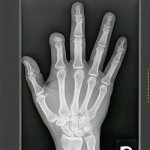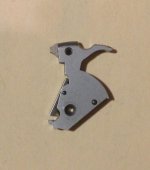You are using an out of date browser. It may not display this or other websites correctly.
You should upgrade or use an alternative browser.
You should upgrade or use an alternative browser.
J-frame dry-fire- How much is too much?
- Thread starter petepeterson
- Start date
geeollie
Member
rockquarry
Member
- Joined
- Aug 9, 2005
- Messages
- 8,659
- Reaction score
- 10,652
I don't dry fire, maybe because it seems like a dull exercise, but I'll not criticize someone that has found dry firing to be beneficial. How does one measure the advantage of a much dry fired gun over one that has not been dry fired? I assume some here may be speaking of a benefit other than a smooth trigger or maybe reduced trigger pull weight, but I really don't know.
I seldom modify any gun, other than maybe adding a scope to a rifle. If a gun doesn't shoot well straight out of the box, I generally don't keep it long. I've had very good luck with Colts and Smith & Wessons (mostly revolvers), but I enjoy J-frames because they are quite challenging. I shoot often, almost exclusively with my own cast bullet loads, and usually single-action Bullseye style at 25 yards, but I'm certainly not an excellent shooter. Many of my S&Ws were purchased new more than thirty years ago. I think they're all pretty smooth from honest use, but I don't recall any of them having unacceptable triggers when I bought them. I'm not gadget-oriented so don't use things like laser sights.
Just a different perspective on the subject, certainly not something worthy of argument...
I seldom modify any gun, other than maybe adding a scope to a rifle. If a gun doesn't shoot well straight out of the box, I generally don't keep it long. I've had very good luck with Colts and Smith & Wessons (mostly revolvers), but I enjoy J-frames because they are quite challenging. I shoot often, almost exclusively with my own cast bullet loads, and usually single-action Bullseye style at 25 yards, but I'm certainly not an excellent shooter. Many of my S&Ws were purchased new more than thirty years ago. I think they're all pretty smooth from honest use, but I don't recall any of them having unacceptable triggers when I bought them. I'm not gadget-oriented so don't use things like laser sights.
Just a different perspective on the subject, certainly not something worthy of argument...
Last edited:
I dry fired my 642 over 3,000 times. It significantly improved the trigger pull.
I dry fired with both left and right hands. Dry firing not only improves the trigger, it improves your trigger finger.
I think the latter is a big part in making the trigger feel better.
Modified
Member
I don't dry fire, maybe because it seems like a dull exercise, but I'll not criticize someone that has found dry firing to be beneficial. How does one measure the advantage of a much dry fired gun over one that has not been dry fired? I assume some here may be speaking of a benefit other than a smooth trigger or maybe reduced trigger pull weight, but I really don't know.
I seldom modify any gun, other than maybe adding a scope to a rifle. If a gun doesn't shoot well straight out of the box, I generally don't keep it long. I've had very good luck with Colts and Smith & Wessons (mostly revolvers), but I enjoy J-frames because they are quite challenging. I shoot often, almost exclusively with my own cast bullet loads, and usually single-action Bullseye style at 25 yards, but I'm certainly not an excellent shooter. Many of my S&Ws were purchased new more than thirty years ago. I think they're all pretty smooth from honest use, but I don't recall any of them having unacceptable triggers when I bought them. I'm not gadget-oriented so don't use things like laser sights.
Just a different perspective on the subject, certainly not something worthy of argument...
Dry firing significantly improved my shooting, although in a way I don't think has been mentioned in this thread.
I have a Ruger Redhawk .44 mag from 2000. This gun is...not good. I mean it's not bad, but I find Rugers can have good triggers from the factory. This is not one of them. It's heavy as heck (both the trigger, and the gun) and just unpleasant to shoot in double action.
So I started dry firing it. If I sat down for a movie I would just dry fire it, holding it out straight, until I couldn't feel my arm. Then I would switch to the other hand. I did this any time I watched television for any reason, until I just couldn't physically pull the trigger any more.
After doing that for a couple months my shooting improved dramatically, especially with my J-Frame (I carry a model 60 with a bobbed hammer).
I've dry fired that old Ruger thousands upon thousands of times at this point, and that trigger is still not as good as my other Redhawk. I don't think I will ever make it good just through dry firing.
Anyway. I think that Dry Firing as exercise, especially with a heavy revolver, that has a heavy trigger, is a rather good way to make time in front of a screen a hell of a lot more productive.
smithman 10
US Veteran
Dry fire result
Broke this firing pin dry firing my 60-7. No big deal, I replaced it but currently use a bobbed hammer on this revolver.
Things can break. Doesn't mean that dry firing is a bad idea.
Here is the definitive answer: When something breaks, that was too much!
As others have indicated, you ain't gonna break it.
Broke this firing pin dry firing my 60-7. No big deal, I replaced it but currently use a bobbed hammer on this revolver.
Things can break. Doesn't mean that dry firing is a bad idea.
Attachments
Purchased my no-lock 340PD about 4 yrs ago and it had the heaviest trigger I’ve ever experienced in a J frame. After several hundred rounds, and even more dry firing, it’s a lot smoother but still over 12 lbs on my scale.
Similar threads
- Replies
- 1
- Views
- 418
- Replies
- 31
- Views
- 3K
- Replies
- 29
- Views
- 2K
- Replies
- 5
- Views
- 753
- Replies
- 40
- Views
- 2K



